
Filter News
Area of Research
- Advanced Manufacturing (4)
- Biology and Environment (45)
- Computational Biology (1)
- Computer Science (4)
- Electricity and Smart Grid (1)
- Energy Science (79)
- Fuel Cycle Science and Technology (1)
- Fusion and Fission (30)
- Fusion Energy (5)
- Isotope Development and Production (1)
- Isotopes (3)
- Materials (46)
- Materials for Computing (5)
- National Security (27)
- Neutron Science (16)
- Nuclear Science and Technology (24)
- Quantum information Science (5)
- Supercomputing (84)
News Type
News Topics
- (-) Artificial Intelligence (112)
- (-) Clean Water (18)
- (-) Composites (23)
- (-) Exascale Computing (64)
- (-) Grid (48)
- (-) Hydropower (6)
- (-) Machine Learning (50)
- (-) Nuclear Energy (94)
- (-) Quantum Science (79)
- 3-D Printing/Advanced Manufacturing (104)
- Advanced Reactors (24)
- Big Data (53)
- Bioenergy (93)
- Biology (106)
- Biomedical (59)
- Biotechnology (35)
- Buildings (45)
- Chemical Sciences (70)
- Computer Science (174)
- Coronavirus (36)
- Critical Materials (16)
- Cybersecurity (31)
- Education (5)
- Element Discovery (1)
- Emergency (3)
- Energy Storage (75)
- Environment (154)
- Fossil Energy (7)
- Frontier (60)
- Fusion (54)
- High-Performance Computing (113)
- Isotopes (53)
- ITER (6)
- Materials (111)
- Materials Science (111)
- Mathematics (8)
- Mercury (9)
- Microelectronics (4)
- Microscopy (40)
- Molten Salt (5)
- Nanotechnology (46)
- National Security (78)
- Neutron Science (136)
- Partnerships (67)
- Physics (60)
- Polymers (22)
- Quantum Computing (48)
- Security (28)
- Simulation (52)
- Software (1)
- Space Exploration (16)
- Statistics (3)
- Summit (62)
- Transportation (56)
Media Contacts
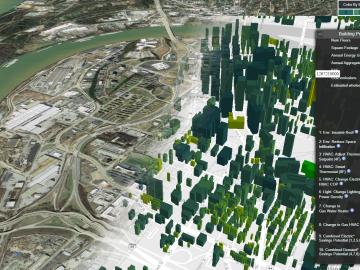
A new tool that simulates the energy profile of every building in America will give homeowners, utilities and companies a quick way to determine energy use and cost-effective retrofits that can reduce energy and carbon emissions.

Four first-of-a-kind 3D-printed fuel assembly brackets, produced at the Department of Energy’s Manufacturing Demonstration Facility at Oak Ridge National Laboratory, have been installed and are now under routine operating
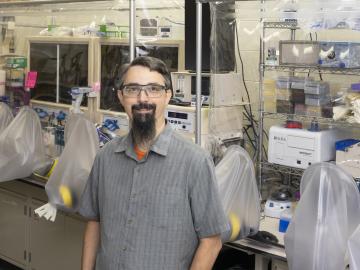
As a metabolic engineer at Oak Ridge National Laboratory, Adam Guss modifies microbes to perform the diverse processes needed to make sustainable biofuels and bioproducts.

As rising global temperatures alter ecosystems worldwide, the need to accurately simulate complex environmental processes under evolving conditions is more urgent than ever.
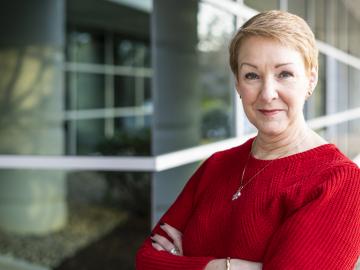
Kathy McCarthy, associate laboratory director for Fusion and Fission Energy and Science at the Department of Energy’s Oak Ridge National Laboratory, has been elected fellow of the American Nuclear Society for her nationally and internationally recognized leadership in nuclear energy and fusion.

An ORNL-led team comprising researchers from multiple DOE national laboratories is using artificial intelligence and computational screening techniques – in combination with experimental validation – to identify and design five promising drug therapy approaches to target the SARS-CoV-2 virus.
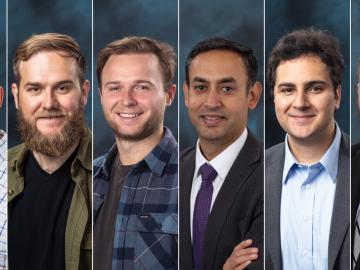
Six science and technology innovators from across the United States will join the fifth cohort of Oak Ridge National Laboratory’s Innovation Crossroads program in June.
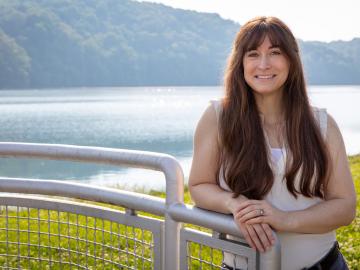
Carly Hansen, a water resources engineer at Oak Ridge National Laboratory, is rethinking what’s possible for hydropower in the United States.

Deborah Frincke, one of the nation’s preeminent computer scientists and cybersecurity experts, serves as associate laboratory director of ORNL’s National Security Science Directorate. Credit: Carlos Jones/ORNL, U.S. Dept. of Energy

Oak Ridge National Laboratory expertise in fission and fusion has come together to form a new collaboration, the Fusion Energy Reactor Models Integrator, or FERMI


